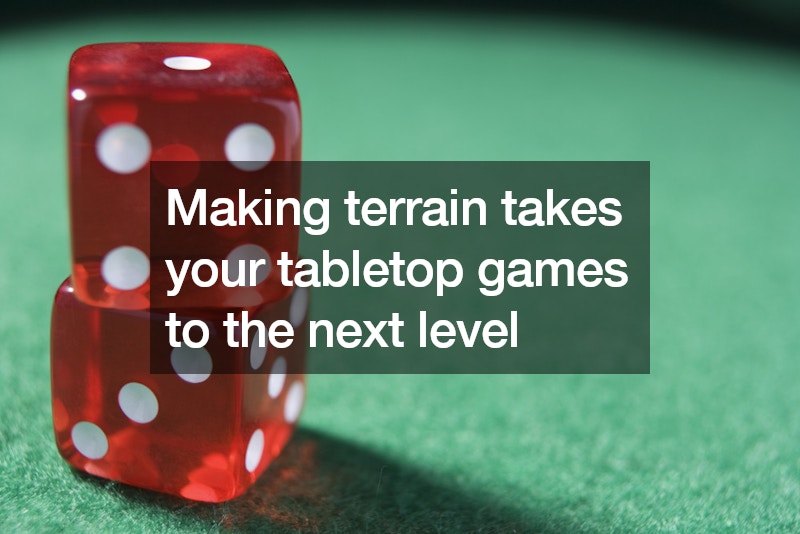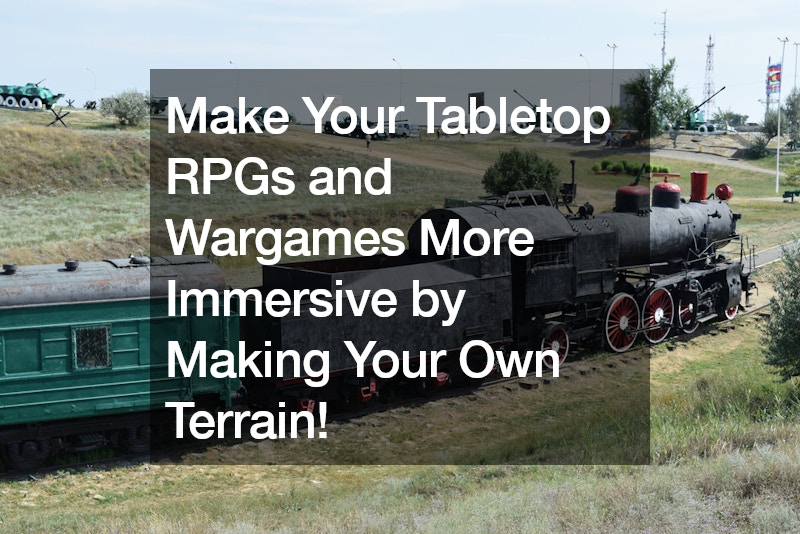Tabletop RPGs and wargames offer endless adventures and strategic battles, but the experience can be elevated even further with custom terrain. Creating your own modular wilderness tiles is a rewarding way to bring your game world to life, making every encounter more immersive. Here’s a step-by-step guide to help you craft stunning and functional terrain pieces for your games.
Getting Started: Cutting and Sizing Bases
The foundation of your terrain tiles is crucial for consistency and modularity. Start with XPS foam, which is easy to cut and shape. Here’s how you can create sturdy and uniform bases:
- Cutting the Foam: Use a Proxxon hot wire cutter for precision, or an X-Acto knife if you’re just starting. Each tile should be a grid of 3×3 squares.
- Uniform Height: While there’s no strict rule for tile height, consistency is key. Aim for all tiles to be the same height—Rachel from RP Archive recommends a 1/2 inch for compatibility with other modular pieces.
- Stability Systems: Consider incorporating a magnet system to lock tiles together, ensuring stability during gameplay. Alternatively, materials like chipboard can be used for a simpler approach.
Base-coating: Laying the Groundwork
Once your bases are ready, it’s time to add texture and color to mimic natural landscapes. Here’s a simple method for a realistic base coat:
- Mixing the Base Coat: Combine two parts mod podge, one part brown paint, and one part dirt for a textured, earthy look. This mixture adheres well and provides a realistic dirt aesthetic.
- Application: Use a cheap paintbrush to apply the mixture. Dry brush browns on twig-like debris and greys on rock-like elements for added depth.
- Side Coating: Don’t forget to coat the sides of your tiles with the brown mod podge mix (without dirt) for a cohesive look.
Adding Plant Life: Get Mow-tivated
Adding plant life brings your tiles to life, making them look lush and vibrant. Here’s how to add static grass and other foliage effectively:
- Applying Static Grass: Brush on liquid PVA glue and let it get tacky. Use a sifter cup to sprinkle static grass over the glue, ensuring even coverage.
- Static Electricity: Generate static electricity using a balloon to make the grass stand upright. This method is simple and effective.
- Creating Modularity: To ensure tiles match seamlessly, make two sides of each tile grassy and leave the other two sides bare. This allows for various configurations and flexible gameplay.
- Enhancing Biodiversity: Use different types of grass, glue mixes, and store-bought tufts for visual variety. Herbs like thyme and green tea leaves, ground in a coffee grinder, add realistic debris.

Final Touches: Adding Rigidity and Custom Features
To make your terrain durable and detailed, follow these final steps:
- Applying Varnish: Once everything is dry, spray the tiles with a matte varnish to give your foliage rigidity. Follow the directions on the can to avoid a frosted appearance.
- Adding Features: Incorporate natural elements like sanitized wood pieces for logs, or small rocks and pebbles to enhance realism.
Resources for Supplies: Where to Get the Best Materials
Creating high-quality terrain requires the right materials. One excellent resource for terrain and diorama supplies is wwscenics. They offer a wide range of products, from static grass applicators to detailed tufts and foliage, ensuring you have everything you need to create professional-looking terrain.
Conclusion
Creating your own terrain for tabletop RPGs and wargames is a fun and rewarding way to enhance your gaming experience. By following these steps, you can craft beautiful, modular tiles that bring your game world to life. Start with sturdy bases, add realistic textures and plant life, and use quality supplies from brands like wwscenics to ensure your terrain looks fantastic and stands the test of time. Happy crafting!

